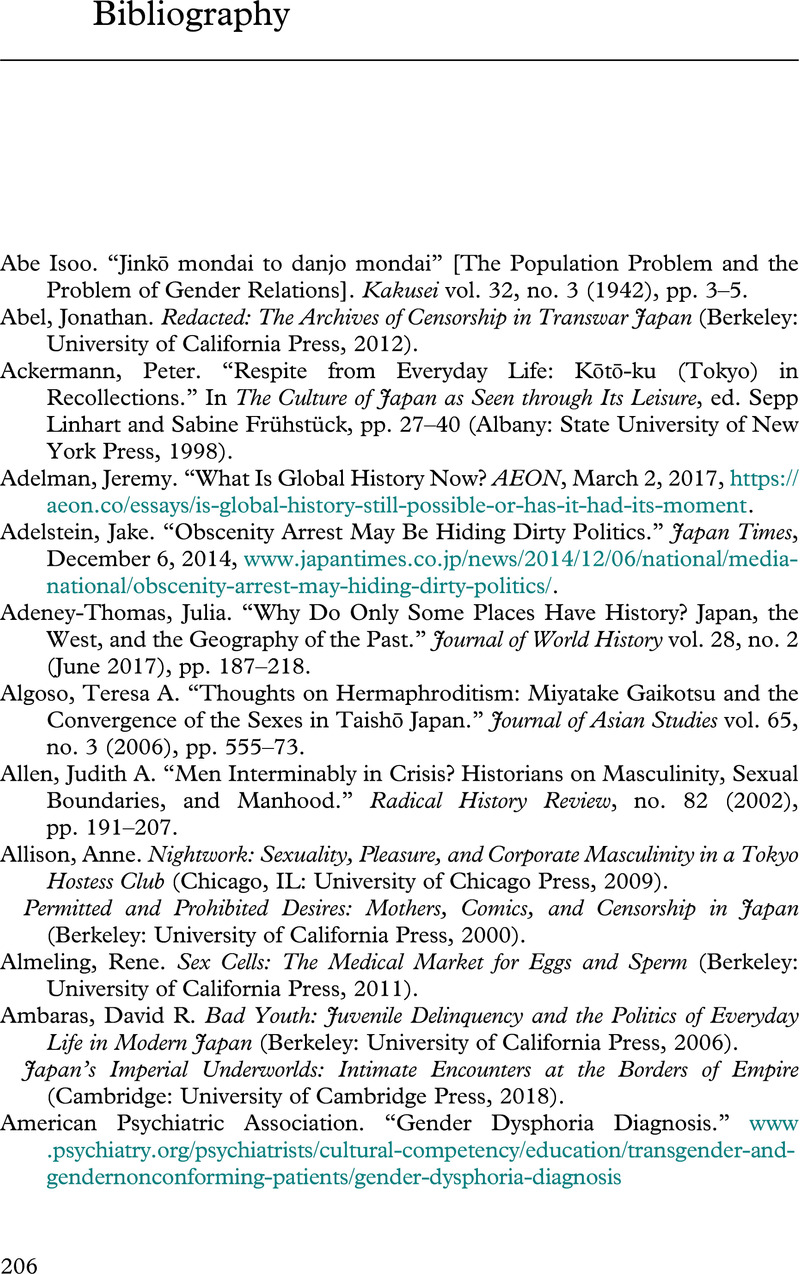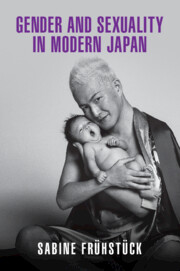Book contents
- Gender and Sexuality in Modern Japan
- New Approaches to Asian History
- Gender and Sexuality in Modern Japan
- Copyright page
- Contents
- Figures
- Acknowledgments
- Introduction
- 1 Building the Nation and Modern Manhood
- 2 Controlling Reproduction and Motherhood
- 3 Redefining Womanhoods
- 4 Sex at War
- 5 The Politics of Sexual Labor
- 6 Queer Identities and Activisms
- 7 Sexing Visual Culture
- 8 Epilogue
- Bibliography
- Index
- New Approaches to Asian History
- References
Bibliography
Published online by Cambridge University Press: 24 March 2022
- Gender and Sexuality in Modern Japan
- New Approaches to Asian History
- Gender and Sexuality in Modern Japan
- Copyright page
- Contents
- Figures
- Acknowledgments
- Introduction
- 1 Building the Nation and Modern Manhood
- 2 Controlling Reproduction and Motherhood
- 3 Redefining Womanhoods
- 4 Sex at War
- 5 The Politics of Sexual Labor
- 6 Queer Identities and Activisms
- 7 Sexing Visual Culture
- 8 Epilogue
- Bibliography
- Index
- New Approaches to Asian History
- References
Summary

- Type
- Chapter
- Information
- Gender and Sexuality in Modern Japan , pp. 206 - 232Publisher: Cambridge University PressPrint publication year: 2022



